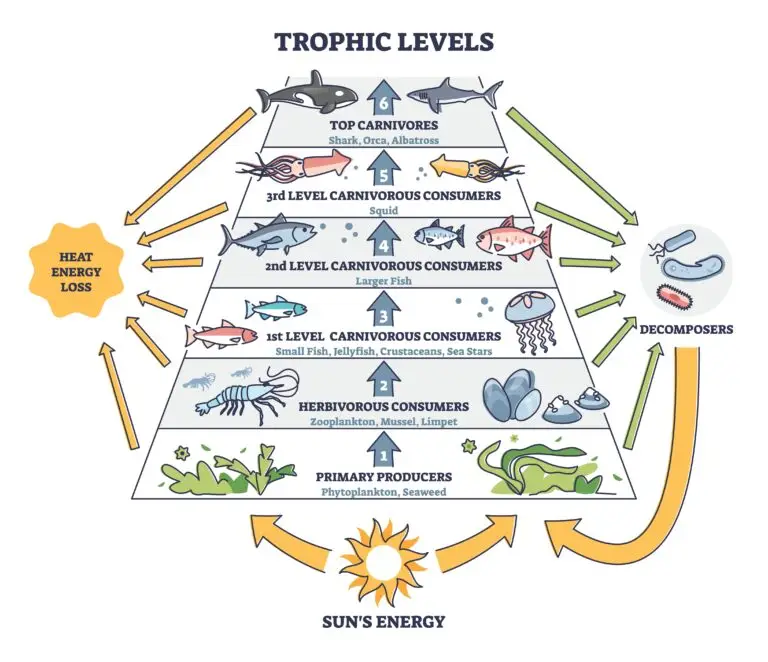Trophic Level

Table of Contents
What is a Trophic Level?
A trophic level is a position in an ecosystem’s food chain or web. It represents a functional level where organisms obtain energy and nutrients and reflects their position in transferring energy and matter through the ecosystem.
Each trophic level in an ecosystem has a distinct role in energy flow, and organisms within the same trophic level generally share similar ecological functions.
The concept of trophic levels helps describe the ecosystem’s feeding relationships and energy flow.
Three Main Trophic Levels
Producers (Trophic Level 1)
Producers, often represented by plants, algae, and certain bacteria, are organisms that can photosynthesize or chemosynthesize to produce their food. They convert sunlight or inorganic compounds into organic molecules, such as carbohydrates. Producers are at the base of the food chain and form the foundation of the ecosystem’s energy pyramid.
Consumers (Trophic Levels 2 and 3)
Consumers are organisms that obtain their energy by consuming other organisms. They can be further classified into different trophic levels based on their position in the food chain:
- Primary Consumers (Herbivores – Trophic Level 2): These organisms feed directly on producers. Examples include herbivorous animals like deer, rabbits, and insects.
- Secondary Consumers (Carnivores – Trophic Level 3): These organisms feed on primary consumers. They are carnivores that eat herbivores. Examples include predators like lions, wolves, and spiders.
Tertiary Consumers (Trophic Level 4 and Beyond)
Tertiary consumers are predators that feed on secondary consumers. In some ecosystems, there may be additional trophic levels, such as quaternary consumers (predators of tertiary consumers) and so on.
Decomposers (Detritivores)
While decomposers are not always assigned a specific trophic level, they play a crucial role in breaking down dead organic matter and recycling nutrients within the ecosystem. Examples include fungi, bacteria, and detritivores like scavengers and decomposer insects.
Energy Transfer and Trophic Efficiency
As energy moves through trophic levels, it is transferred from one level to the next. However, energy transfer is not 100% efficient. A significant portion of energy is lost as heat during metabolic processes. This results in a pyramid-shaped distribution of energy in trophic levels, where each level has less energy available than the one below it. This phenomenon is known as the pyramid of energy.
Related Links
Community
Decomposer
Heterotroph
Taxonomy